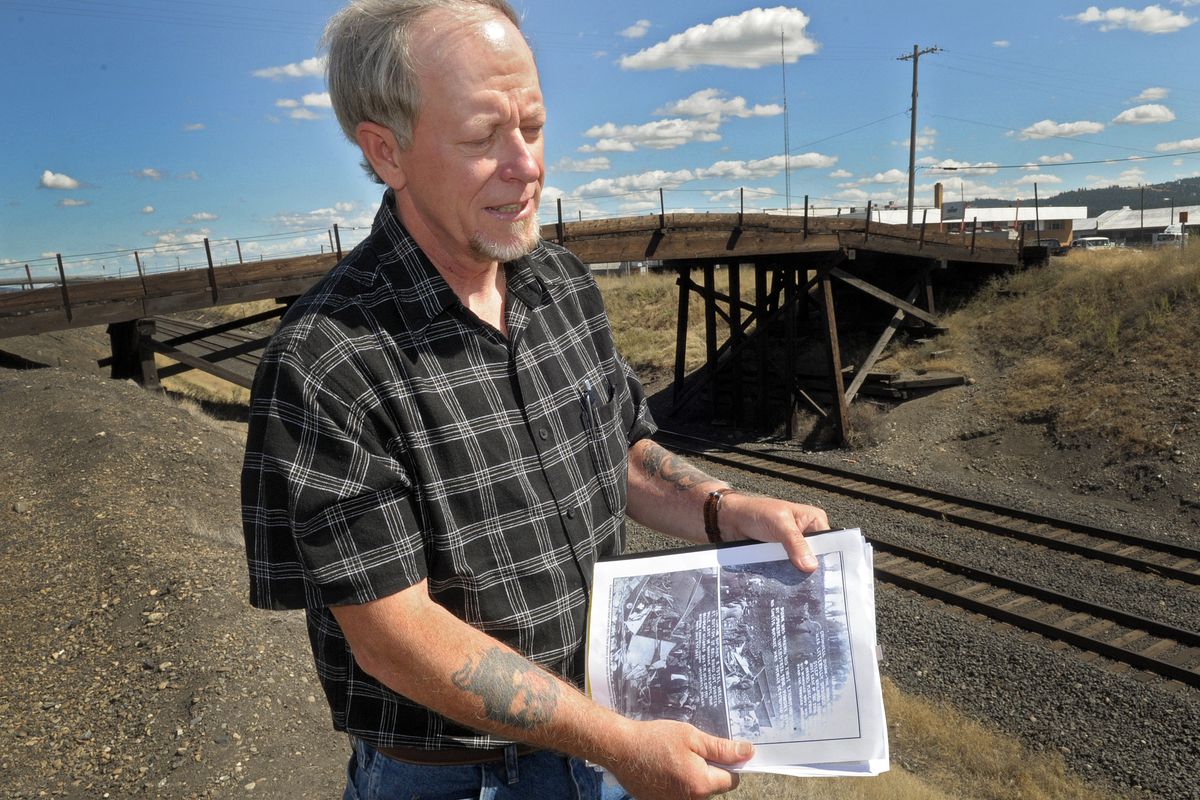Retired sergeant leading effort to memorialize ‘boy aviator’
100th anniversary of fatal biplane crash at fair is Oct. 2

A retired Air Force sergeant in Spokane wants the city to commemorate the death of an early aviator who crashed his Curtiss biplane in front of a fair crowd of thousands in Spokane nearly a century ago.
Blaine Burrell said the death of 19-year-old Cromwell Dixon, sometimes called the “Boy Aviator,” was an important episode in the history of aviation.
Burrell has started a campaign to erect a monument to Dixon in time for the 100th anniversary of the accident on Oct. 2, 1911.
“The whole purpose of this endeavor is to make people more aware of what went on here in Spokane 99 years ago,” Burrell said.
Burrell has been researching Dixon’s career and has pinpointed the crash site along the BNSF Railway Co. main line south of Trent Avenue and west of Fiske Street.
The rail line passes through a 25-foot-deep cut at that location, and it was believed that a west wind whipping up the line caught Dixon’s Curtiss Model D, flipping it to the side and causing it to drop 100 feet onto the rocky embankment, according to news accounts.
“It was like a wind shear,” said Burrell, who retired from the Air Force in 1996.
There were also reports from the crash that Dixon was having engine trouble, he said.
At the time, the interstate fairgrounds were located off Altamont Street between Trent and Sprague avenues, the site that later became the former Playfair race track.
A crowd of 5,000 packed the stands to see Dixon and another aviator, both of whom were booked for flying exhibitions before an eager public.
Several thousand more were reportedly standing at the gateway to the grounds. Crowd estimates run as high as 12,000.
The second pilot reported that he tried to discourage Dixon from taking off because of the wind, but Dixon went ahead anyway.
“Dixon being 19 years old, he didn’t want to let them (the crowd) down,” said Burrell.
The Oct. 3 news report in The Spokesman-Review said, “Young Dixon, a clean-shaven, clean-cut lad, was the essence of confidence five minutes before he started on his fatal flight.”
His reputation was well earned. He was the youngest licensed pilot in the United States and held the 43rd aviator license granted at the time.
He had flown 50 previous exhibitions, and two days before the crash, he won a $10,000 prize at Helena for being the first aviator to fly across the spine of the Rockies – the Continental Divide.
After making the flight, he refueled and returned to Helena to collect his winnings. Then he packed his plane onto a train and came to Spokane.
Money for the prize was put up, in part, by owners of the Great Northern and Northern Pacific railroads. The NP line ran through the accident site.
After the plane went down, Dixon was hauled out of the cut and taken to the hospital, where he died about 45 minutes after the crash.
Most spectators may not have been able to see the actual crash since the plane dropped into the cut and was about a quarter mile away from the stands, Burrell said.
Dixon was under contract with Curtiss Exhibition Co. to perform in the aircraft built by Glenn Curtiss. He paid the company a percentage of his earnings.
Born in San Francisco in 1892, he moved with his family to Columbus, Ohio, and had been sending money to his widowed mother in New York when he died.
Prior to piloting the Curtiss, he had built an early roller coaster, two motor-driven bicycles and a bicycle-powered dirigible called the “Sky-cycle,” which he flew eight miles and across the Mississippi River at St. Louis.
Last year, a monument to Dixon was erected in Helena at Morrison Park on Airport Road.
Burrell said he’s contacting historical agencies and private companies in his efforts to build interest in funding a monument.
Because the crash scene is inaccessible along the rail line, Burrell said he thinks it should be placed at a public location nearby, possibly next to a landscaped business in the area.